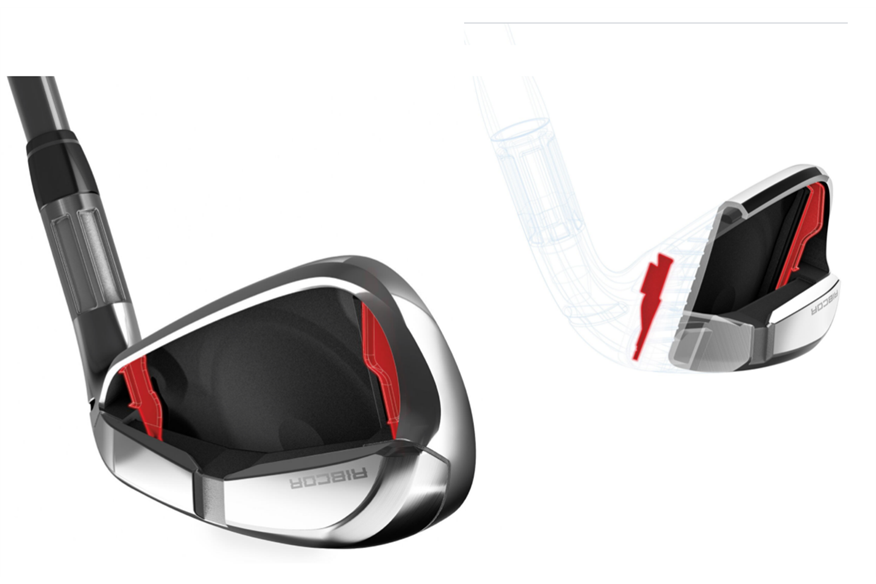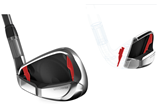RIBCOR: TaylorMade’s new iron technology
Published:
What is the RIBCOR technology that features in the latest M3 and M4 Irons?
The Science of RIBCOR
When the club head of an iron strikes a ball, only a certain percentage of the energy is imparted back into the ball, as reflected by the measured COR of that head. Any flexing of the head that is not directly located at the impact point on the face is lost energy. By strategically stiffening the structure of the iron head, RIBCOR technology greatly reduces energy loss, especially on mishits.
RIBCOR technology works in conjunction with Face Slots to stiffen the area outside the scoreline area while retaining flexibility and COR in the area inside the Face Slots. When these proprietary TaylorMade technologies are implemented simultaneously, the performance benefits are amplified. The outer structure of the iron remains stiff, while the face remains free to flex during impact— enhancing energy transfer that leads to increased ball speed.
By efficiently focusing impact energy directly back to the ball, off-center hits see higher ballspeeds, more carry distance and improved dispersion. RIBCOR technology also allows for placement of additional mass in the heel and toe areas of the head, resulting in significantly higher moment of inertia (MOI) than the corresponding 2017 irons. This combination of benefits provides irons with RIBCOR technology a substantial increase in overall forgiveness.
Tomo Bystedt, Senior Director of Product Creation – Irons, said: “RIBCOR, like Twist Face, is really a revolution in terms of providing straighter distance. Inside the face slots we still have a super thin face, high COR inverted cone and now right outside the face slots we have these two really firm ribs that are really thin still so that we don’t have a lot of weight in there, but they are really stiff in the structure so the club.”
“What’s essentially happening here is we’re isolating the outside parts of the heel and the toe sections that gets more rigid in terms of the rotational forces that you’re going to see on any kind of miss-hits you see on the club. The centre of the face retains that flexibility and we still design that right up to the COR limit with a lot of speed but we’re getting a stiff region in the heel/toe that we didn’t have before.
“In RIBCOR the high toe isn’t flexing, which is producing a much higher frequency sound at lower amplitude so it’s really sounding a lot better. Beyond the straighter and more distance, you’re going to see better sound and feel, which for some golfers is what they notice more quickly.”
“We haven’t really had a mechanism to produce a consistent distance across the whole face and part of the reason is we don’t really have a structure at the top so we can’t introduce a slot or anything like that to improve the speed there – we actually have to make it more rigid, and that’s where RIBCOR comes in.”
“RIBCOR really helps forgiveness all across the face up until where the speed pocket comes in to play, really completing the sweep of technologies to produce consistent distance across the face (adding to Face Slots, Speed Pocket, Inverted Cone). We’re also trying to push COR higher, figuring out all our manufacturing tolerances to really get as close as possible as we can to just stay legal on ball speed.”
NEXT
TaylorMade M3 Iron Review
TaylorMade M4 Iron Review
TaylorMade launch new M3 and M4 range
What is Twist Face Technology?

